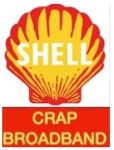March 02, 2010, 12:33 PM EST
y Brian Swint and Eduard Gismatullin
March 2 (Bloomberg) — BP Plc, vying with Royal Dutch Shell Plc as Europes largest oil company, plans to increase annual pre-tax profitability by $3 billion over the next two to three years by bolstering production and cutting costs.
BP will increase average annual oil and gas output by 1 to 2 percent through 2015, the company said in a strategy update today in London. Most of the increased profitability will come from making the refining and marketing business more efficient.
The challenge and the opportunity for us is that while our portfolio ranks amongst the best in the industry, our financial performance has yet to fully reflect this, Chief Executive Officer Tony Hayward said. There is now a real opportunity to make our portfolio work harder for us, and we intend to do just that.
Hayward, who revived output growth and cut layers of management after taking over the helm in May 2007, plans to save an annual $2 billion in refining and marketing in the next few years. Thats after BP exceeded last years cost-cutting target at a time when the recession weighed on fuel demand, keeping refining margins under pressure.
Biggest Shakeup
Upstream project management will be centralized in Houston in the biggest shakeup since the merger with Amoco Corp. in 1998, said Andy Inglis, who heads up exploration and production at BP. The company can save as much as $700 million a year in project management and $500 million a year by improving the efficiency of its drilling operations, he said.
Hayward said hes not terribly focused on acquisitions and is more interested in buying fields.
I would be surprised if we found good value on the corporate side, Hayward said in response to analysts questions in London. But we do think there will be good opportunities at the asset level.
BP rose 0.7 percent to 600.20 pence in London. The shares have gained 4.9 percent since the company reported earnings a month ago.
Oil production in 2010 will be slightly lower than last years output of 4 million barrels a day, Hayward said Feb. 2. BP is shifting its portfolio to about 45 percent natural gas from the current 40 percent, and the company said finding and development costs in 2009 were $12 a barrel of oil equivalent, the lowest in five years.
Production Boost
The company will start 42 major projects by 2015, which are expected to contribute about 1 million barrels of oil equivalent a day to production.
BPs Africa unit said today that it will sell its marketing operations in Namibia, Malawi, Tanzania, Zambia and Botswana following a strategic review. The company will focus on South Africa and Mozambique while it will also continue to invest in its operations in Angola, Algeria, Egypt and Libya.
While BP expects oil refining margins to remain weak in 2010, it doesnt plan to reduce capacity. Iain Conn, head of refining and marketing at BP, said that the company has closed its underperformance against rivals since 2007.
The company will press ahead with a modernization program at its refineries, with the upgrade at its Whiting refinery in Indiana being the largest undertaking, Conn said. BP expects refining and marketing costs to return to below 2004 levels.
BPs Global Indicator Margin, a broad measure of refining profitability, averaged $2.16 a barrel in the quarter to Feb. 25, the London-based oil company said on its Web site. That compares with $1.49 in the fourth quarter of 2009 and $6.20 in the first quarter of last year.
–Editor: Stephen Cunningham, Will Kennedy.
To contact the reporter on this story: Brian Swint in London at [email protected]. Eduard Gismatullin in London at [email protected]
To contact the editor responsible for this story: Will Kennedy at [email protected]
This website and sisters royaldutchshellgroup.com, shellnazihistory.com, royaldutchshell.website, johndonovan.website, and shellnews.net, are owned by John Donovan. There is also a Wikipedia segment.
 EBOOK TITLE: “SIR HENRI DETERDING AND THE NAZI HISTORY OF ROYAL DUTCH SHELL” – AVAILABLE ON AMAZON
EBOOK TITLE: “SIR HENRI DETERDING AND THE NAZI HISTORY OF ROYAL DUTCH SHELL” – AVAILABLE ON AMAZON EBOOK TITLE: “JOHN DONOVAN, SHELL’S NIGHTMARE: MY EPIC FEUD WITH THE UNSCRUPULOUS OIL GIANT ROYAL DUTCH SHELL” – AVAILABLE ON AMAZON.
EBOOK TITLE: “JOHN DONOVAN, SHELL’S NIGHTMARE: MY EPIC FEUD WITH THE UNSCRUPULOUS OIL GIANT ROYAL DUTCH SHELL” – AVAILABLE ON AMAZON. EBOOK TITLE: “TOXIC FACTS ABOUT SHELL REMOVED FROM WIKIPEDIA: HOW SHELL BECAME THE MOST HATED BRAND IN THE WORLD” – AVAILABLE ON AMAZON.
EBOOK TITLE: “TOXIC FACTS ABOUT SHELL REMOVED FROM WIKIPEDIA: HOW SHELL BECAME THE MOST HATED BRAND IN THE WORLD” – AVAILABLE ON AMAZON.





















